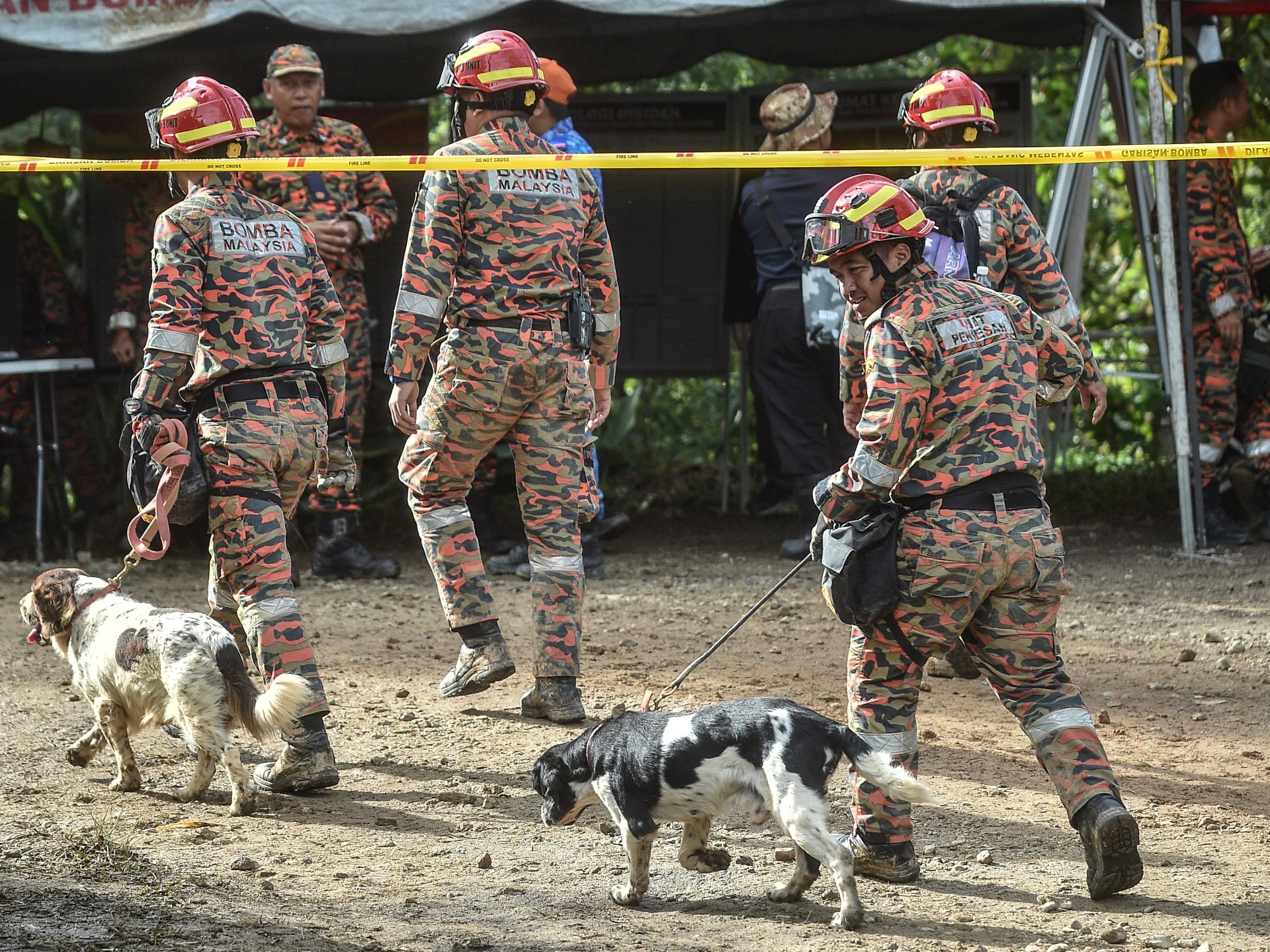Why Existential Dangers Matter in Worldwide Relations

An existential threat might be outlined as a “risk that threatens the destruction of humanity’s long-term potential”. To place it bluntly, it’s a threat that may credibly result in human extinction, with irreversible harm to the power of human civilisation to restore itself. The ‘terminal impacts’ to existential dangers – e.g. their challenges to our existence – needn’t manifest within the short-term; and this is the reason they’re oft-neglected. Current communities of researchers specializing in existential dangers (x-risks), stay divided over the precise boundaries and constituents of the set of x-risks – although most agree that the next rely as ‘core’ examples: a world nuclear winter (arising from the deployment of nuclear weapons or different sources of fallout), a (engineered) pandemic that infects the whole Earth’s inhabitants, or Synthetic Intelligence (AI) that destroys humanity. A lot as these dangers are sometimes dubbed to be excessively speculative or exaggerated in nature, they deserve our concern not essentially due to the chances with which they happen, however the absolute scale and depth of devastation that they’d wreak upon humanity.
Many may effectively spell the tip to humanity. Regardless of so, most discussions on x-risks have a tendency to stay throughout the domains of ethical and utilized philosophy – extra notably, the Efficient Altruism and Lengthy-termism Actions have been instrumental in spearheading the popularisation of the idea. But it stays the case that not sufficient consideration is paid to the topic within the worldwide relations (IR) neighborhood, with a notable exception being the joint analysis mission by Jordan Schneider and Pradyumna Prasad, which pointed to the dangers arising from potential war between the US and China, two sizeable nuclear powers with precipitously tense relations. Certainly, long-termism/x-risk and worldwide relations communities have remained, by far and huge, essentially disjointed. The next seeks to sketch out a couple of conceptually rooted arguments regarding why the sector of IR and IR students should take severely the potential of existential dangers, to grapple totally with the stakes and challenges confronting us as we speak.
Image this: a sequence of explosions storm the world in fast succession, incinerating huge swathes of the Earth’s inhabitants, and killing many extra by way of the smoke emissions and environmental damages that instantly observe. The radioactive traces of the detonations and bombings permeate the thickest partitions of overground buildings, affecting the billions left behind. The gargantuan quantity of particles emitted by the detonations fill the skies with fog and smoke so dense that it could take years, if not decades, earlier than the skies clear. Darkness prevails.
The above image is considered one of a world nuclear winter. As Coupe et al. note in a 2019 paper, a possible nuclear winter following on from a scorching struggle between the US and Russia may give rise to a “10°C discount in international imply floor temperatures and excessive modifications in precipitation”. At first look, there exist enough fail-safe mechanisms to render this worst-case state of affairs unbelievable: navy commanders which are cognizant of the dangers of escalation; the existence of bunkers through which people can search refuge; the actual fact of the mutually assured destruction imposing enough deterrence upon key decision-makers.
But, this risk can’t be so merely dismissed. It has been over 200 days for the reason that Russian military invaded Ukraine. Current setbacks on the battlefield and rising dissatisfaction amongst the Russian inhabitants have precipitously heightened the chance that Putin would ponder deploying a tactical nuclear weapon on the battlefield. With out wading into particular quantitative estimates (although examples of those might be discovered here), the underlying explanations are comparatively easy: in in search of an more and more unlikely victory over nominally Russia-claimed territories in Ukraine, protect his home credibility and political standing, and to drive the palms of NATO and Ukraine to return to the negotiation desk, Putin would possibly really feel that he’s operating out of viable choices.
The nuclear possibility is most actually undesirable even to Putin given the potential repercussions, however may very well be seen as preferable to perceived capitulation and the eventuation of overthrow by precise opposition – for which there’s at present comparatively restricted probability of success. Certainly, categorically, the full-blown navy conflicts between any two nuclear powers – Russia, China, or the US; Pakistan and India – may escalate, by way of the security dilemma – into inadvertently precipitating a nuclear confrontation between such powers.
Nuclear winters are on no account the one x-risks. Take the much-touted AI ‘arms race’ as an illustration – as AI progresses precipitously in the direction of larger speeds, larger accuracy, and cultivates a deeper capability to regulate and course-correct by way of self-driven calibration and imitation, it’s obvious that it, too, may equip international locations with considerably larger capacities to do hurt. While the analysis and improvement itself would generate comparatively innocuous outputs – akin to programmes able to monitoring and monitoring people’ behaviors and speech patterns, or AIs guiding deadly autonomous weapons in selecting their targets, it’s the craving for competitors and victory that poses a basic menace to international security.
We’ve got seen main powers akin to China and the US search to out-maneuver each other by way of punitive and preemptive measures pertaining to chips and semiconductors. Correspondingly, the extent of coordination and communication throughout delicate points – akin to AI and deployment of drones – has declined significantly, reflective of the broader attitudes of distrust and skepticism that underpin the bilateral relationship. Within the dearth of clearly agreed-upon frameworks for regulation and expectation alignment, it could be of no shock if the AI race between the 2 largest economies on the planet culminated at a vicious race to a selected backside: a backside in human welfare as AI is wielded by antagonistic powers to realize geopolitical targets, and, within the technique of so doing, causes substantial disruptions and irrevocable destruction to our digital and knowledge infrastructure.
Setting apart the potential risks of clashing world powers, there exists an extra, constructive case for real worldwide cooperation. Existential dangers require coordination in sources, methods, and broader governance frameworks to be able to be correctly addressed. The dangers arising from a non-aligned, strong artificial intelligence – that’s, a self-conscious, bettering, and really autonomous AI whose preferences diverge from these of human (pursuits), may effectively culminate at human extinction. Such dangers require cautious administration and set up of each guardrails and responsive programmes that might mitigate in opposition to potential non-alignment, and/or the untimely arrival of robust AI. In principle, international locations that lead expertise and innovation needs to be allocating substantial sources to devising a shared and clear framework of AI regulation, in addition to foresight-driven analysis geared toward planning for numerous eventualities and doable trajectories adopted by AI. In observe, governmental cynicism and strategic significance hooked up to accelerating domestic-national developments in AI have rendered such long-term-oriented initiatives extremely tough. Even European laws on AI – arguably probably the most superior amongst its counterparts – stays vulnerable to inner discrepancies and nonalignment. Extra interlocution between continents and geopolitical alliances is thus important in enabling the devising of laws, legal guidelines, and decision-making rules that may inform for what to do in face of AI dangers.
An alternate concern looms, in regards to the stability of meals provide within the face of maximum climate and different geopolitical disruptions. Think about the continuing international meals disaster, which has arisen from a combination of the continuing struggle in Ukraine and regional droughts and floods ensuing from a chronic La Niña (attributed by some to climate change). A key to decision of such crises requires each focused and complete agreements over manufacturing and distribution of meals, in addition to a basic structural push for extra speedy inexperienced transition. Wanting international coordination, a lot of this is able to be massively tough – meals provide chains can’t be optimised if commerce limitations and border skirmishes frequently disrupt cross-border flows. Makes an attempt to curb carbon emissions and advance a shift away from non-renewables, would require international locations to see worth of their committing and adhering to stringent but a lot wanted pledges regarding shrinking their carbon footprints. Wanting real distribution of labour and collaboration – over the manufacturing of photo voltaic panels and renewable power, for one – we’d be trending dangerously down a path of no return.
There are those that argue that local weather change is just not, in truth, an existential risk; that its results are inconsistently distributed all through the world and may very well be overcome by way of adaptive applied sciences. But this underestimates the extent to which disruptions to meals manufacturing and provide can cause or exacerbate preexisting geopolitical and cultural tensions, thereby precipitating conflicts that might ultimately escalate into whole or nuclear struggle. The chance could also be objectively low, however the harms are sufficiently weighty as to benefit severe consideration.
The tutorial neighborhood would thus profit from taking severely the quantum of impacts that worldwide battle and collaboration possesses in relation to existential challenges to mankind. There stays a lot to be explored within the intersection of long-termism and IR – quantification and mechanisation of causal processes, the devising and analysis of potential options. Basically, it’s crucial that IR principle can account for not simply the probabilistically doubtless and proximate – but in addition structural threats that might undermine the continuity and survival of the human species.
Additional Studying on E-Worldwide Relations



